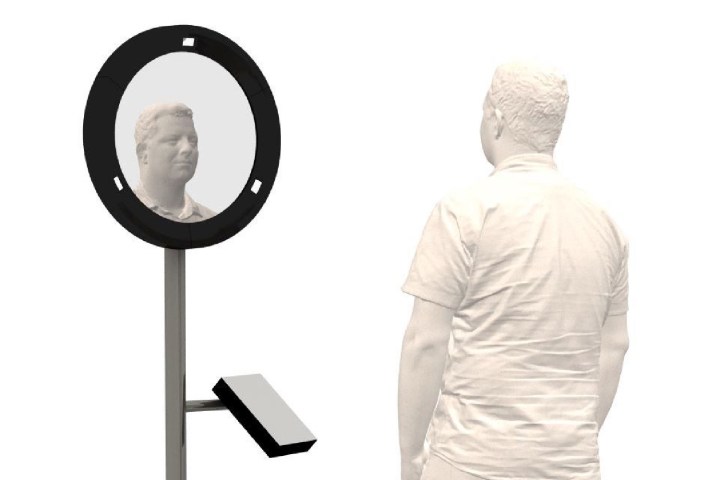
Working alongside eyewear tech developer Sfered, the company has developed new 3D-scanning tech for retail optical locations that makes finding a pair of spectacles that fit perfectly as simple as glancing in a smart mirror.
“We wanted to develop a highly accurate facial scanning system that would enable the collection of all metrics required for fitting custom-fit eyewear in a single scan,” Phil Newman, CMO at Fuel3D, told Digital Trends. “The mirror scanner captures true facial 3D data in 0.1 seconds, allowing data capture of all the relevant data needed to create custom eyewear — including pupillary distance, nose bridge width, facial width, and distance to ear. The system also allows opticians and optometrists to virtually fit frames to customers for an enhanced customer experience.”

Newman explained that the smart mirror lets retailers upload their latest eyewear catalogs, so that customers can access the most comprehensive range of frames possible: far more than could be held by any single retail outlet.
“We [chose to incorporate] the design into a mirror because when people look into a mirror, they focus much more naturally than if they are looking into a camera, which means that the scanner collects more accurate data for custom eyewear fitting,” he continued.
At present, the tech is set to be employed by Danish eyewear designer Monoqool, which, as the makers of 3D-printed polyamide frames customized for each wearer, is already one of the more tech-savvy eyewear companies out there. After that, it could be on its way to your neck of the woods.
“The mirror scanner is designed to be deployed via independent retail opticians and is about to be tested in select optical retail locations in Holland, with full retail availability of the system expected by the end of 2016,” Newman concluded.


